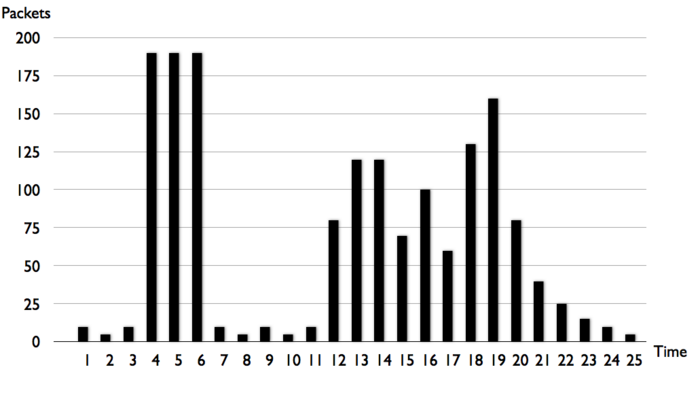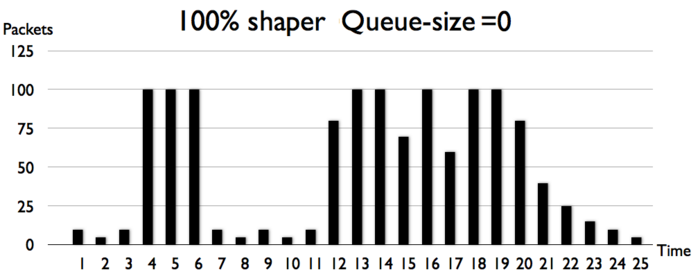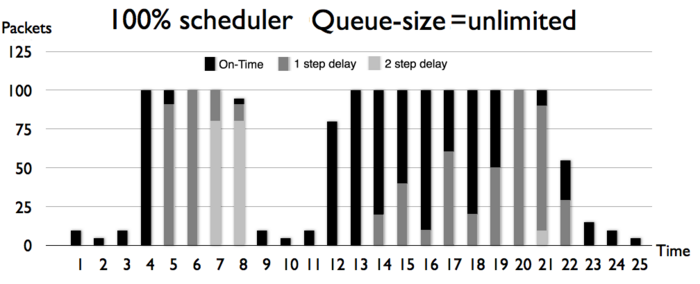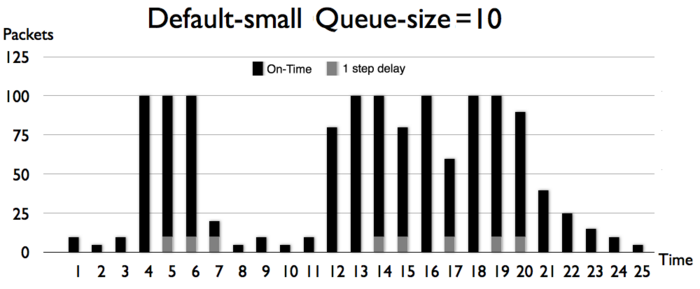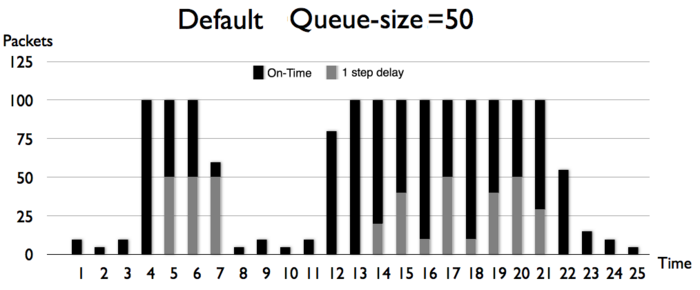Manual:Queue Size: Difference between revisions
| Line 7: | Line 7: | ||
In Mikrotik RouterOS queue size can be specified in the "/queue type" menu. Each queue type have a different option for specifying queue size (pfifo-limit, bfifo-limit, pcq-limit, pcq-total-limit, red-limit), but all principles are the same - queue size is main option that decide should the package be drooped or scheduled for later time. | In Mikrotik RouterOS queue size can be specified in the "/queue type" menu. Each queue type have a different option for specifying queue size (pfifo-limit, bfifo-limit, pcq-limit, pcq-total-limit, red-limit), but all principles are the same - queue size is main option that decide should the package be drooped or scheduled for later time. | ||
In real time environment this process is happening | In real time environment this process is happening continuously without any stops, steps or other interruptions, but in order to show it as an example we will divide it into steps, where it is possible to know exactly how many packets will be received/transited in every step. | ||
We will not go into specific details of TCP and dropped packet retransmission - consider these packets as simple UDP stream. | |||
[[Image:Queue_size_No_Limit.PNG|700px|Queue Size Example]] | [[Image:Queue_size_No_Limit.PNG|700px|Queue Size Example]] | ||
As you can see in the picture above there are 25 steps and there are total of 1610 incoming packets over this time frame. | |||
==100% Shaper== | ==100% Shaper== | ||
Revision as of 15:27, 17 December 2008
Queue Size Example
This example was created to highlight queue size impact on traffic that was queued by specific queue.
In Mikrotik RouterOS queue size can be specified in the "/queue type" menu. Each queue type have a different option for specifying queue size (pfifo-limit, bfifo-limit, pcq-limit, pcq-total-limit, red-limit), but all principles are the same - queue size is main option that decide should the package be drooped or scheduled for later time.
In real time environment this process is happening continuously without any stops, steps or other interruptions, but in order to show it as an example we will divide it into steps, where it is possible to know exactly how many packets will be received/transited in every step.
We will not go into specific details of TCP and dropped packet retransmission - consider these packets as simple UDP stream.
As you can see in the picture above there are 25 steps and there are total of 1610 incoming packets over this time frame.
